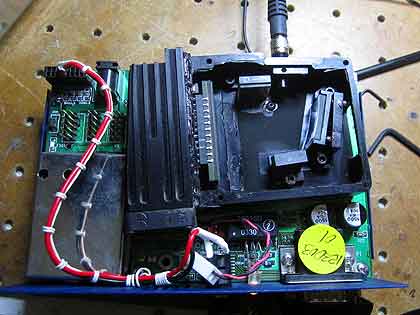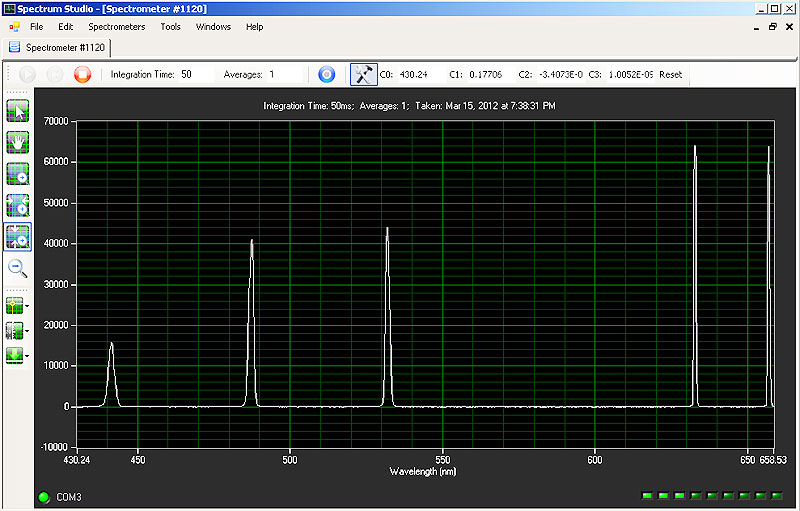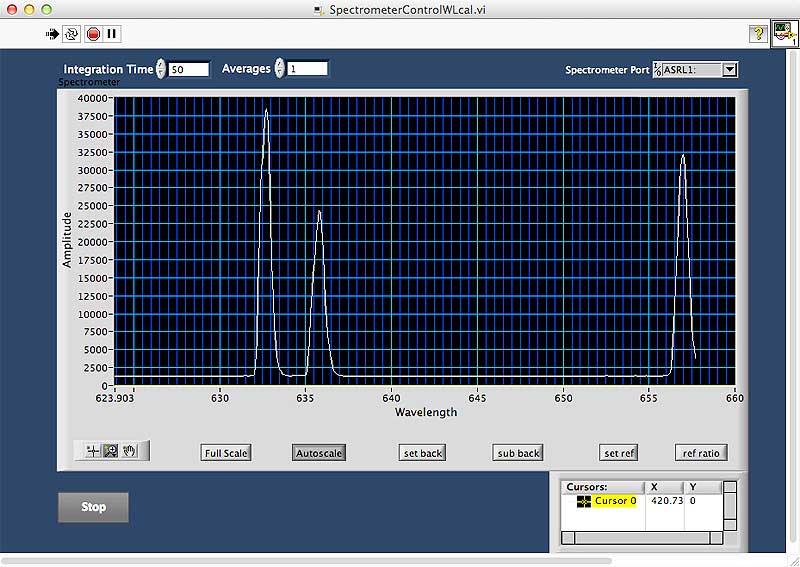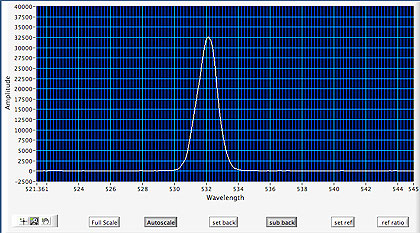
(OEM version of B&W Tek Model BTC-110S)
Return to home page

The friendly greek friends whom I sold a few lasers, donated me one of those nice spectrometers (many thanks to them!) These small, fiber coupled and grating-based spectrometers are sold by Science-Surplus and can sometimes be found on ebay for not too much money, but these come unaligned. Their site has notes for doing the alignment which are pretty clear to follow, but it still took me a day to get the spectrometer to work. Important is to use several lasers simultaneusly in order to keep track of line widths troughout the wavelength range. The extreme sensitivity of the detector doesn't make it easy to perform minute final adjustments, which have to be made almost in complete darkness. With the 1800l/mm grating it is supposed to achieve about 1nm resolution over some 200nm range. To really get there, including symmetric gaussian line forms, requires quite delicate fine tuning, and taking compromises in the spectral range. For my purposes (I have a high-res CCD spectrum analyzer anyway), I preferred to have an as wide span as possible, and achieved a range from 430-660nm, with some 3nm resolution at the lower end and less than 1nm resolution at the high end. This can probably tweaked a bit more.
Here a picture showing the laser lines I used for calibration:

We see here that with my choice of adjustments, the resolution becomes better with longer wavelengths. Note also the calibration constants in the upper part, which were determined relative to my WA-2000 Burleigh wavemeter; in the end, the accuracy turned out to be a fraction of a nanometer.
This pic above was taken using the Spectrum Studio software that is supplied with the spectrometer. Slightly inconvenient for me was that this runs under Windows only, so requires a Windows emulator for the Mac I use. However, surprisingly there were also LabVIEW drivers supplied, despite this was not mentioned. It turned out that these drivers do not seem fully baked, rather look like beta software, and I had some problems getting them to run. One problem was that the spectrum kept being truncated at roughly 1000 pixels; this seems a bus timeout problem. One other problem was the driver for my Logilink RS-232 to USB converter, which uses the Prolific 2303 chip and the driver did not run under 64bit OSX Lion. After a weekend of tinkering, though, I managed to have all run fine, despite yet not being 100% stable.
I extended the LabVIEW interface to include wavelength calibration, plus background cancellation and ratio features for making transmission plots, etc. Here some plors:

Above, shown are lines from HeNe, and ECDL's with HL63133DG and ML101J27 diodes. We see that at red wavelengths, the resolution is below 1nm.


Above to the left, the 532nm line from a Yag DPSS laser, the resolution being about 1.5nm.
To the right, a filter transmission curve in ratio mode (this is inaccurate at the blue end since there was almost no light output).
My mod/extension of the LabVIEW drivers can be gotten here; note that you need the other files from Science-Surplus (that are included with the spectrometer) as well.
Return to home page
Vers. .3 -03/12